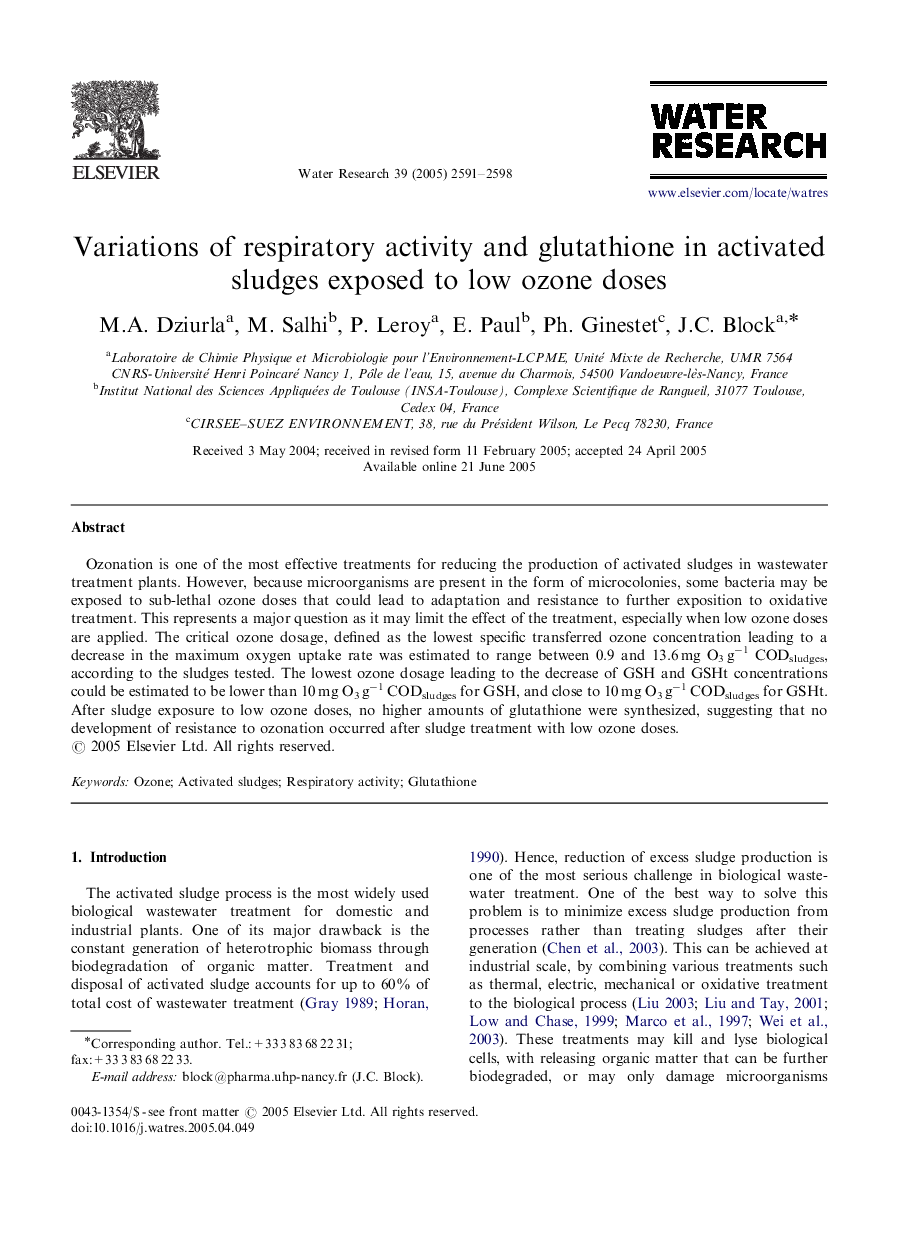| Article ID | Journal | Published Year | Pages | File Type |
|---|---|---|---|---|
| 4486256 | Water Research | 2005 | 8 Pages |
Ozonation is one of the most effective treatments for reducing the production of activated sludges in wastewater treatment plants. However, because microorganisms are present in the form of microcolonies, some bacteria may be exposed to sub-lethal ozone doses that could lead to adaptation and resistance to further exposition to oxidative treatment. This represents a major question as it may limit the effect of the treatment, especially when low ozone doses are applied. The critical ozone dosage, defined as the lowest specific transferred ozone concentration leading to a decrease in the maximum oxygen uptake rate was estimated to range between 0.9 and 13.6 mg O3 g−1 CODsludges, according to the sludges tested. The lowest ozone dosage leading to the decrease of GSH and GSHt concentrations could be estimated to be lower than 10 mg O3 g−1 CODsludges for GSH, and close to 10 mg O3 g−1 CODsludges for GSHt. After sludge exposure to low ozone doses, no higher amounts of glutathione were synthesized, suggesting that no development of resistance to ozonation occurred after sludge treatment with low ozone doses.
